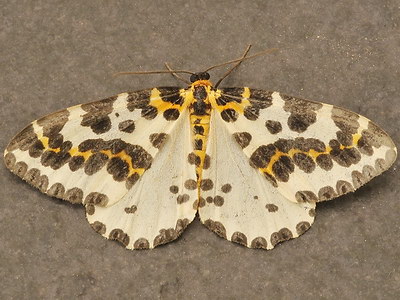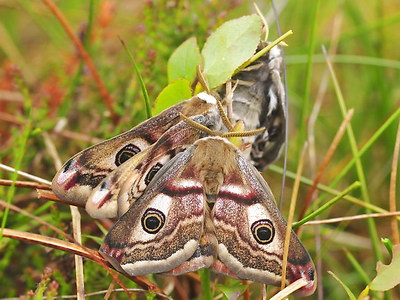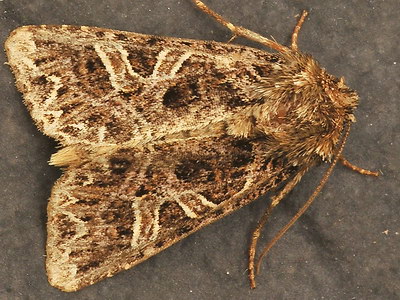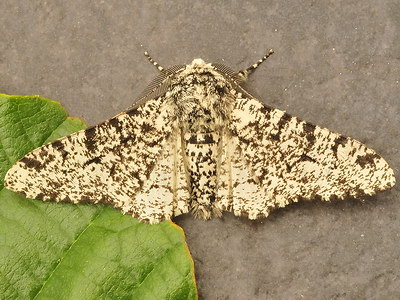|
- An occasional series of longer Reports and Studies -
“Moths”
Moths... some people hate them; many people are fascinated by the endless variety, their elusiveness, and their surprising colourfulness. We are not expert in Moths but have collected a range of photographs over the years and thought we would put them together here — in no particular order. We will add to this Feature over the years.
|
|
Firstly, we would like to acknowledge the fact that most of these photographs originated from a moth trapping session at our house south of Lough Allen. Facilities were provided by Rob Wheeldon, M.Sc. of EcoAudit.ie (the Environment Research and Tourism Consultancy). Also, his, and Fíona Wheeldon’s (NPWS), help in identifying all these species, is greatly appreciated
If you need help with your Moths you are best to contact them.
|
This collection of images is laid out in a pragmatic fashion; we have not stuck to taxonomic order or families. Neither are these moths particulary rare and they will be found in many locations depending on habitat and weather conditions. To study moths you need a moth catcher but these are becoming more affordable. (Ask Rob for details!)
The process of catching Moths is largely painless and we believe no moths were harmed in this research!
|
|
— Some Species we have around Lough Allen —
|
|
|
Note: The backgrounds or vegetation shown mostly reflect material used to settle the Moths taken from a trap or after they had flown into the house...
|
|
|
|

|
|
Swallow-tailed Moth Ourapteryx sambucaria
A largish common attractive species, very recognisable with its distinctive colour and fast flight.
Mottled Beauty Alcis repandata
This moth has beautifully fringed wings, and is widespread and common. The larvae overwinter on a variety of trees and shrubs including Bilberry, Hawthorn Birch and Oak.
|
|

|
|
|
|
|
|

|
|
Riband Wave Moth Idaea aversata
This moth also has fringes on its wings. There are two distinct forms, the typical form having a dark band, the plain one only with narrow cross-lines.
Elephant Hawkmoth Deilephilia elpenor
A big and very striking Hawkmoth. The elephant name refers to its curiously shaped caterpillar.
|
|

|
|
|
|
|
|

|
|
Garden Tiger Arctia caja
A common species often disturbed in lawns and tussocks when cutting grass in warm Summer weather. Variable pattern on the wings.
PebbleProminent Notodonta ziczac
Another common moth throughout Europe. It is found at woodland edges.
|
|

|
|
|
|
|
|

|
|
Brimstone Moth Opisthograptis luteolata
Common around Lough Allen and often comes into houses. Same colour but not to be confused with the Brimstone Butterfly.
Magpie Moth Abraxas grossulariata
A brightly patterned and sensibly poisonous moth which can be seen flying during daytime.
|
|

|
|
|
|
|
|

|
|
Poplar Grey Acronicta megacephala
Normally much greyer; this sepcimen was quite brown. However the diagnostic pale rings (stigmata) on the forewings are visible. The hind wing is white.
Coxcomb Prominent Ptilodon capucina
Found in woodlands, scrub and gardens on a variety of deciduous trees. Quite common.
|
|

|
|
|
|
|
|

|
|
Dark Arches Apamea monoglypha
Common in grassy places, June to August.
Gold Spot Plusia festucae
Quite a large common moth of wet areas. It is distinguished by gold spots withing the white spots on the forewings.
|
|

|
|
|

|
|
Large Emerald Geometra papillonaria
A gorgeous medium sized Geometer moth. This one flew in from a grassy area near water and woodland.
Emperor Saturnia pavonia
One emerging Emperor Moth attracts much attention from two others attracted to the site. A common but stunning moth often found in mountain moorland in ireland. Theses were from the slopes west of Bencroy overlooking Lough Allen
|
|

|
|
|
|
|
|

|
|
Common Heath Ematurga atomaria
One of the ‘geometre’ moths, this is the male with a compund antenna. Like the Emperor Moth above this is a moth of morlands and the caterpillars feed on heath and heathers.
Iron Prominent Notodonta dromedarius
The colouring is cryptic and matches the bark of Birch and Alder, the food species of the Caterpillars.
|
|

|
|
|
|
|
|

|
|
Green Arches Anaplectoides prasina
An attractive green wash characterises this species but soon fades. Like deciduous woodlands.
Lychnis Hadena bicruris
This image shows the two characteristic markings (stigmata) outlined in white. The hindwings are a contrasting pale brown.
|
|

|
|
|
|
|
|

|
|
Small Magpie Eurrhypara hortulata
A species which is found in both Europe and North America. The adults are often found on Nettles.
Silver Y Autographa gamma
A resident of the south of Europe, this moth flies north every Summer but cannot survive here. Nonetheless it is common and widely distributed in the summertime.
|
|

|
|
|
|
|
|

|
|
Grey Arches Polia nebulosa
This is quite a brown specimen but, apparently, the paler greyer form is more common in Ireland. We have two ‘grey’ species on this list, both of whom are quite brown. Does this reflect their feeding stock in our area?
Peppered Moth Biston betularia
Comes in light and black forms to suit its environment!
|
|

|
|
|
|
|
|

|
|
Plain Golden Autographa jota
There is a very similar more ornate moth called the Beautiful Golden Y. So this is its drap more muted cousin!
|
|
|
|
HOME
|